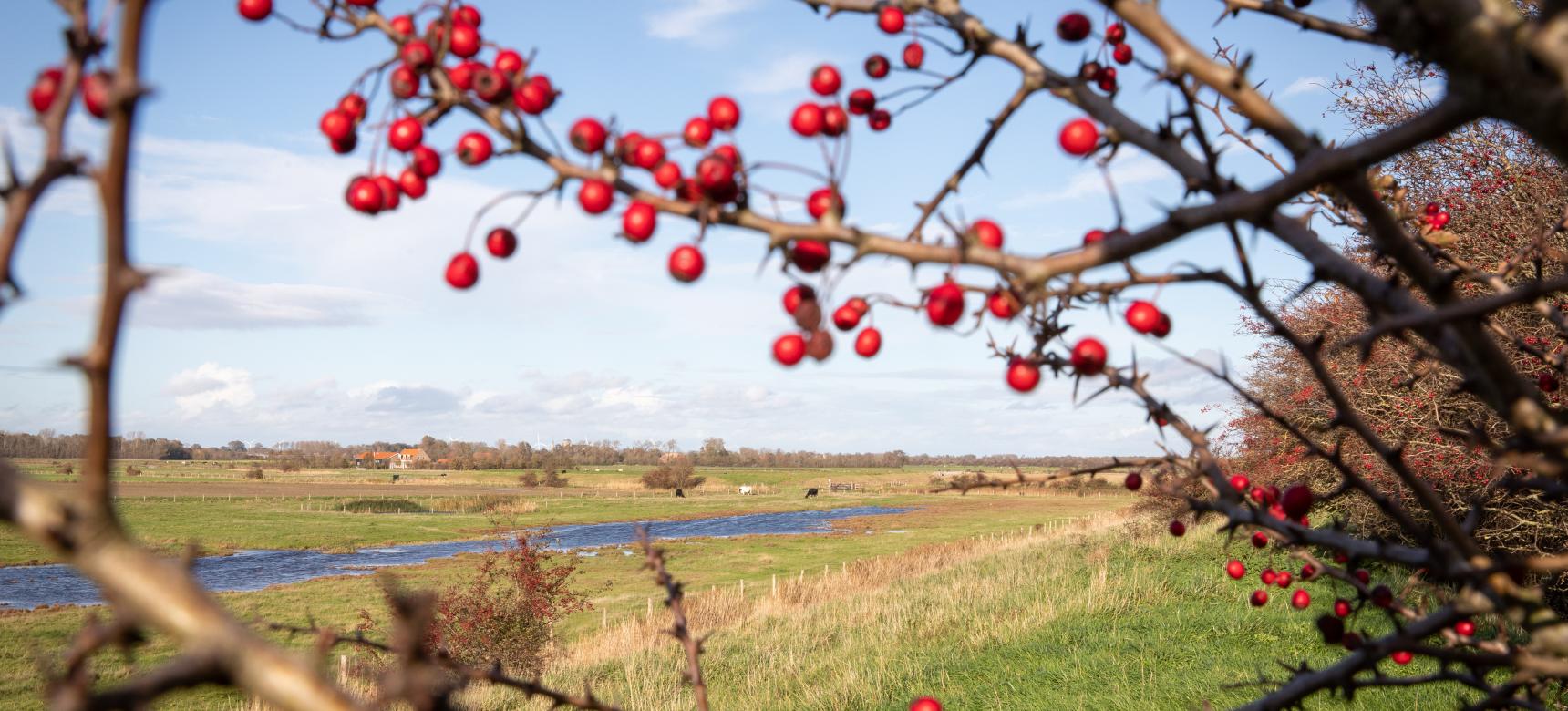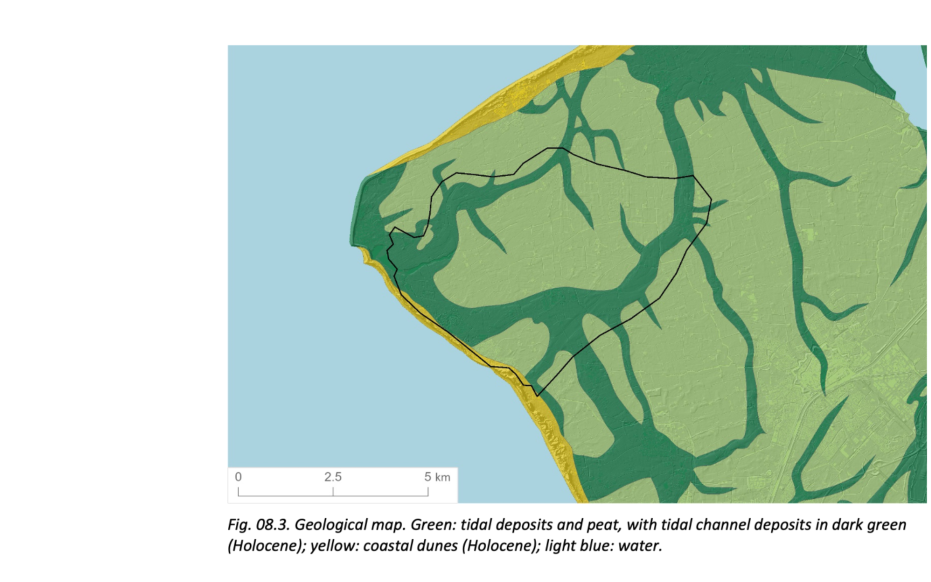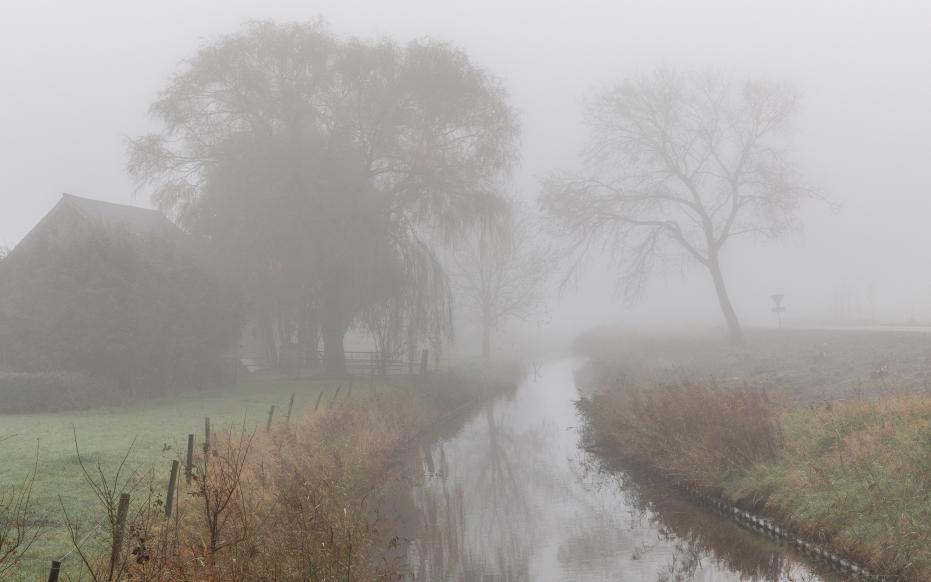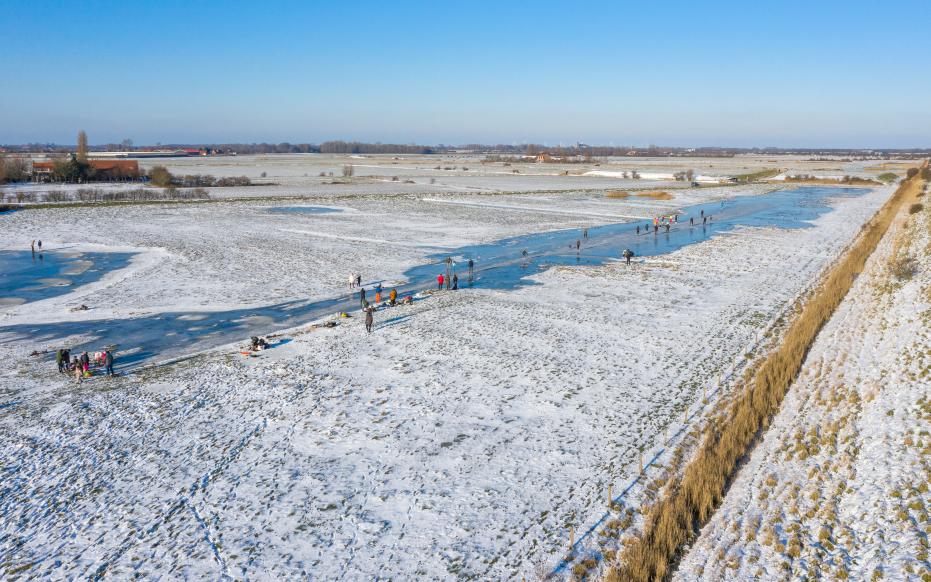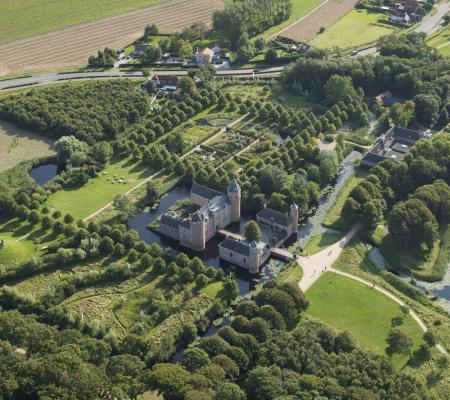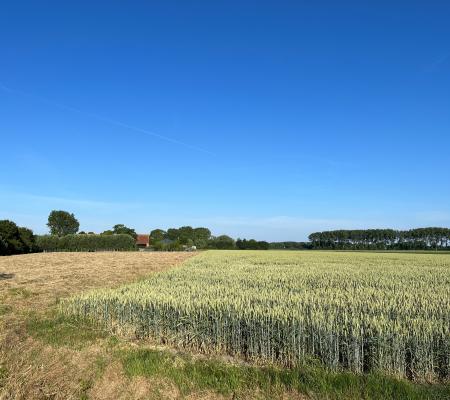Pool grounds and creek ridges
The creeks in this area provided drainage for the peatland, causing the peat to partially decompose. As a result, the peat surface became lower and a thin layer of clay was deposited on the peat at high tide. The peatland changed into a salt marsh landscape due to the weight of the clay on the peat. The current in the creeks of this salt marsh landscape was stronger than outside it. Therefore, during the phase of silting up, only clay was deposited outside the channel and the channels became filled with sand. In the course of centuries, the peat and clay outside the creeks sunk in and the land surface fell. There was less subsidence in the sandy gullies, which is why the former gullies are higher in the landscape. These higher areas are called creek ridges. On these are often the oldest roads and settlement centers.
